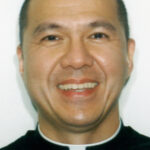Draft Diocesan Report for the Synod on Synodality
Period for public comment from June 2-16, 2022
Please share your comments about this document through:
- Google form: https://bit.ly/3wOOKxe
- Email: synod@diodav.org
- Mail comments to the chancery (780 West Central Park Ave, Davenport, IA 52804-1901)
For a PDF of this document, click HERE.
Synod for a Synodal Church
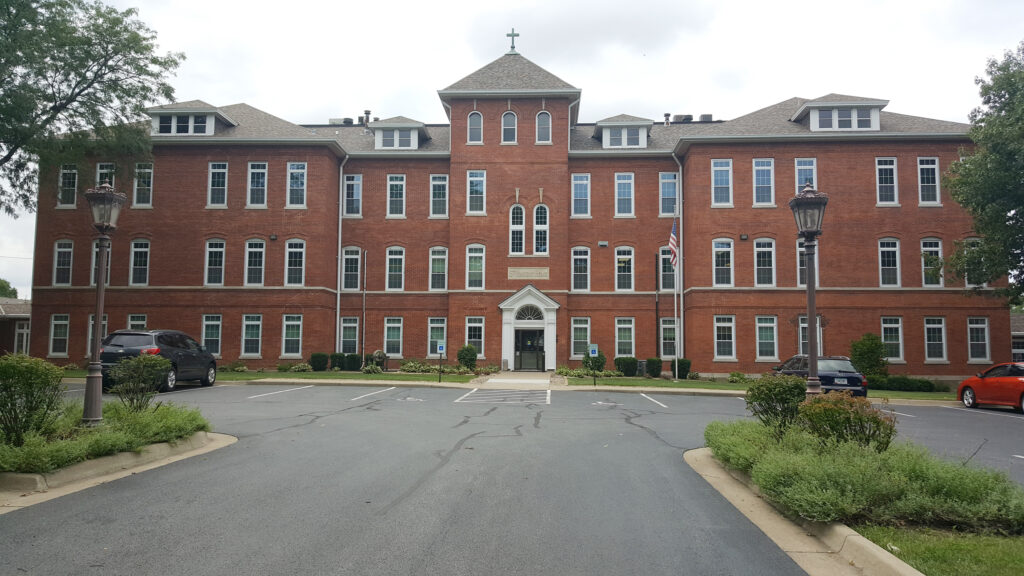
Diocese of Davenport, Iowa
- “Love one another as I have loved you.” At the opening Mass for the Synod, Bishop Thomas Zinkula described the Synod as a way of following Jesus’ command to love. He described the behavior of people who love each other in terms that he connected with the three themes of the Synod that were given to us by Pope Francis. When we love someone, we spend time with them (Communion), talk with and listen to them (Participation), and walk together (Mission). Bishop Zinkula stated that every member of the diocese would be invited to speak and to listen as we explored our experience of the Church. During the following months, members of the diocese prayed, met, spoke, and listened. The question that provided a focus for our reflections was, “Based on your personal experience, what breaks your heart and what fills your heart about the Catholic Church.”
- Responses to the question comprised over 13,000 comments. Reading through all of them, members of the synthesis committee agreed that eleven themes stood out: Liturgy, Welcoming/Belonging/Inclusivity, Leadership, Youth and Family Engagement, Polarization and Politics, Church Rules, Community, Church Teaching/Tradition, Prayer and Spirituality, Outreach and Evangelization, and Image of the Church. It also was noted that certain topics, comments, and keywords appeared under more than one theme. Comments were divided according to those themes and topics before being reviewed again for key ideas. The following report is intended to present an overview of comments that emerged within the diocesan reflections.
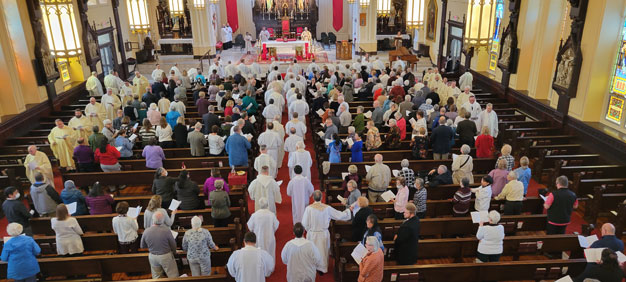
Liturgy and Spirituality
- We are a liturgical tradition and one of the most frequent themes addressed by respondents to the Synod question was the liturgy. Over 1600 comments related to the theme of liturgy. Of those 72% fell under what fills hearts. Many see value in the liturgical tradition, in the availability of the sacraments, in the repetition and familiarity of ritual, in its continuity across both time and place. The sacraments, especially the Eucharist, are highly regarded as central to our faith and to the life of the church. The data from all the liturgy theme comments attested to the importance of the Eucharist and other sacraments in their lives.
- Among those aspects that filled their hearts, people listed the gathering of the community in common worship and the universality of the liturgy throughout the world. They also found meaning in such things as music, processions, candles, incense and holy water, which help emphasize the meaning of the liturgical rites. What breaks some hearts is the sense that there is, even among those who attend church regularly, a loss of faith in the Real Presence in the Eucharist. A survey that made news some years ago contributed to the respondents’ sadness. Some are also upset because they see members of the congregation behaving in ways that seem to them to show a lack of respect for the sacraments.
Parish experiences
- In several areas, the diversity of people’s parish experiences and preferences was manifest. Some said they heard inspiring homilies, while others listed poor preaching as something that breaks their hearts. Participants appreciate homilies that connect to their lives, have a positive message, and provide something to think about during the coming week. On the other hand, homilies that are devoid of content, unengaging, judgmental, or disconnected from the lives of listeners are lamented. With regard to specifics, peoples’ expectations diverge. For example, one wants more jokes to hold their attention while another wants more educational content. Music was another area that appeared among both “fills” and “breaks” comments. Some are inspired by music that is uplifting, lively and beautiful, while others are concerned about poor music that drags and does not invite congregational participation.
- While large numbers of participants appreciate the liturgy, a small number said they find it too repetitious and “boring.” It seems to some overly formal with “rote” prayers and gestures whose meaning is unclear. A couple of participants mentioned their experience of churches of other denominations that have practices such as offering babysitting and projecting the words of readings, which can help some experience fuller participation in the service.
Pre-Conciliar Rite
- A final area of disagreement has to do with the pre-Conciliar rite for the Mass. Sixty-seven comments mentioned the “Latin Mass.” The comments were nearly evenly split between broken and filled hearts. There are strong feelings on both sides. Some hearts are filled by the opportunity to experience the older rite, which they describe as “feeling holy.” Their hearts are broken by restrictions on the celebration of the “Latin Mass.” Others rejoice that the Mass has changed to allow much greater participation as well as understanding. A few of those hearts are broken by what they see as a divisive attitude among some who want to attend or would like all to return to the pre-Conciliar liturgy.
Covid
- Undeniably, the experience of the pandemic affected participants’ feelings about the Church’s liturgical practices. Many spoke of missing the sacraments. Some accused church leaders of depriving Catholics of the sacraments just when we needed them most. Others said that after having to do without, they experienced a renewed appreciation for the beauty and grace of the sacraments and of being with the community. Those who have returned to Mass can’t help noticing that others are slower to do so. One person put it this way: “There will be a lot of work needed to return liturgies to their prior levels of excellence.”
- On the other hand, during the pandemic, parishes began to do things such as livestream Masses. By continuing this and other practices, the church can reach people who are homebound, thereby helping them feel they are still connected with the parish as well as with the larger church.
Spirituality
- Catholic spiritual traditions other than the sacraments received fewer comments and seemed not to be controversial, although there were comments in both the “fills” and “breaks” columns. Hearts are filled by a variety of experiences – from preached or directed retreats, Cursillo, and Christian Experience Weekends to Eucharistic adoration, Stations of the Cross, and Marian devotion, especially the rosary. Things that break hearts include a perception that, especially since Vatican II, many don’t know or participate in the rich Catholic spiritual traditions. A few commented on an apparent loss of the custom of family prayer due to busy schedules or to changing priorities.

Church Teaching
- Many respondents expressed strong feelings about Catholic teaching and Tradition. Here again, responses show differences of perspective that at times amount to division or polarization. Some fault the church for failure to keep up with the times while others call for greater efforts to resist the “temptations to give in to the prevailing culture.” On the one hand, the Tradition is described as a firm foundation, a source of stability that can sustain us in an unstable world. Its perseverance for over 2,000 years gives testimony to the truth and to our fidelity to the teaching of Christ. A theme that was prominent among comments on church teaching was a love for the universality and constancy of doctrine. Among the beliefs that fill hearts are forgiveness, life after death, redemption in Christ, the presence of the Holy Spirit, the sanctity of marriage and family life, and Catholic social teaching.
- On the other hand, some view Church teaching as rigid and out of touch with the realities of life today. They cited in particular teachings on divorce and remarriage, clerical celibacy, ordination, women’s roles, birth control, and LGBTQ+. A number of respondents use the term “hypocrisy” in relation to church teaching. One respondent stated the concern in the form of a comparison: “The Church makes radical efforts to focus on abortion but is not accepting of the life of a child who is a child of God.” The statement referred to church teaching on LGBTQ+ issues.
Particular Concerns
- Specific teachings that garnered comments included divorce and remarriage, LGBTQ+, issues of race and culture, and immigration. In most cases, both sides of the issue were represented in the comments. Ninety-seven percent of comments on divorce appeared under “broken hearts.” People feel that the annulment process is too difficult and “lacking in love.” Many, especially the young, thought that church rules on divorce showed that the church is “close-minded” and drive people away from the church. A few thought that the church just needs to help people reach a better understanding of the rules and of the reasons for them. Concerns around LGBTQ+, race, and culture focused on the sense that church teachings and/or the way those teachings are understood or expressed lead to those groups feeling excluded from the community.
- Of 42 comments on birth control, 41 told of broken hearts. The church’s teaching was described as outdated and an intrusion on personal rights. Three people think the church needs to do a better job of explaining the harm that birth control can cause.
- The 12 comments regarding God and creation were primarily divided between the view that the church doesn’t put enough emphasis on the particular issue and the view that the church gives it too much attention. Comments on immigration illustrate some of the polarization over “political issues.” Some are unhappy with the church for “endorsing illegal immigration,” while it fills the hearts of others to see the church reaching out to meet the needs of immigrants.
- A number of responses indicated individuals’ grave concern about Catholic politicians who take public stands opposed to the teaching of the church and about church leaders who have not stood up to the politicians.

Faith Formation and Catechesis
- Closely connected with feelings about the teachings of the church are those having to do with catechesis. A number of participants said their hearts were filled by their own experience of Catholic schools. A few of those think that students currently enrolled in Catholic schools are having similarly rich experiences, while a larger number said that those teaching religion today are not sufficiently prepared. Eighteen to twenty responses pointed to cases in which they felt church teaching was being misrepresented by someone in a teaching position.
- Quite a few people, including both younger and older people, expressed a wish for more opportunities to learn about the faith. Some bemoan the lack of religious education for those who are past the age for confirmation. Young Catholics long for more time to discuss not only what we believe but also why we believe as we do. Several respondents described adult Catholics today as ill-equipped to explain or defend their faith.
- On the positive side, many people have found that on-line and other media sources do provide ways to learn about the faith. By making use of recorded or televised lectures, Catholic podcasts, and on-line courses, one can learn about Scripture, spirituality, church history and Tradition. And one can fit the material into the busy and unpredictable schedules that characterize life in today’s world.

Community and Belonging
- Experiencing the church as a welcoming, loving, and active community came up in almost every listening session for the Synod. This is vital to the life of the church. The comments received included over 1300 related to community and over 1700 related to a sense of welcome or belonging. Furthermore, comments related to other themes and topic such as women and LGBTQ+ also addressed the need to feel welcome within the church. Hearts are filled with joy when we gather for worship, when we learn and work together, and when we reach out together to meet the needs of the wider community. Respondents asserted that if we are to keep moving on our own faith journey, we need one another. Responses from Confirmation classes and from students at St. Ambrose University in particular demonstrated that for young people, community and belonging is a central value.
- While there was overwhelming agreement on the importance of community, respondents’ experiences of the church varied widely. Some of the diversity seems to be related to differences among individual parishes. Some spoke of seeing people hurry away after church, not taking time even to greet others. Some parishes have customs such as offering refreshments after at least some Masses in order to encourage members to stay and converse. Some parishes seem to do a better job than others of welcoming new members.
- A significant number of young adults described the church as failing to welcome all. In fact, reviewers noted that among young adults the number of those with heartbreaking concerns far exceeds the number of those who say their hearts are filled by the church’s welcome. Most of their comments referred to the whole church rather than to a particular parish, and often included the term “judgmental” in the description of the unwelcoming attitude. The inability to share Eucharist with Christians of other denominations or with those who are divorced and remarried was one area of concern. One young person expressed the sentiment in terms of Gospel values: “I don’t think Jesus would exclude people as we do each week.”
Youth and family engagement
- Perceptions of the church as rigid and as closed to certain groups appear to be one factor when youth and families are not engaged in the church. Another perceived factor in their absence is a culture in which church and faith are not a priority. Still other responses referred to a lack of catechesis and to parents not passing on the faith to children.
- Synod participants noted that numbers of young people and families at Mass as well as in religious education and youth groups are small in comparison with the number of young people and families who are registered in the parish. One person lamented seeing “so many empty pews.” Overwhelmingly, those who commented longed to see families and young people at worship and at other parish activities. Many stated that they are inspired when they see young people in church, when new families join the parish, and when they hear about young members going on mission trips, or enjoying such activities as the National Catholic Youth Conference and retreats. Comments included a clear message that the church needs to pay more attention to young people and make better efforts to serve their needs.
Welcoming all
- Along with a significant number of young people, members of other groups feel marginalized in the church, no matter what age they are. Divorced people, even those who are not remarried or who have completed the annulment process before remarrying, said they have felt unwelcome and/or judged by church members. One person who described herself as a divorced mother said she thought it was getting better in her parish. Single people in general and especially single mothers seem to feel more welcome in some parishes than in others. Immigrant workers mentioned ways in which they felt excluded while also expressing ways that their experience of the church fills their hearts.
- Both church members of European descent and those of other racial or ethnic groups stated that we have a long way to go in appreciation and integration of diverse cultures in our worship and community life. Some parishes do have bilingual liturgies or liturgies in languages other than English. Some have events that express cultural traditions other than Anglo, but not enough of that is happening.
- About one-sixth of the comments about the church failing to welcome others had to do with LGBTQ+ persons. One young person who was apparently a member of that community said simply, “The church doesn’t welcome people like me.” On the other hand, Pope Francis, Bishop Zinkula, and some parishes were commended for their efforts to be more inclusive.
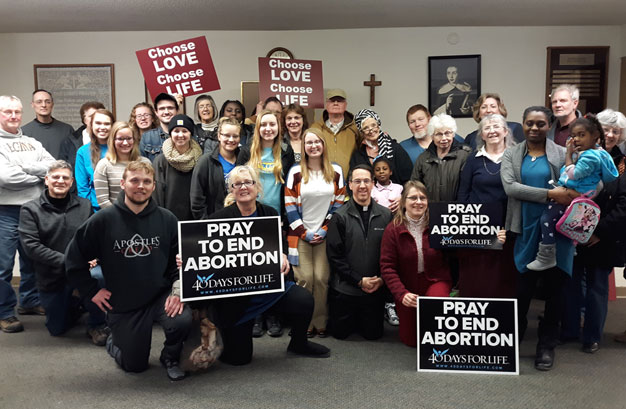
Polarization and Politics
- A major threat to community within parishes as well as in the church at large is polarization. Synod responses included nearly 500 mentions of the issue. Overwhelmingly, the polarizing issues have to do with politics – either the same political issues that are polarizing the nation, or issues of parish/diocesan politics. It was noted that even the bishops seem to be at odds with one another at times. The good news is that the divisions break people’s hearts. We long to overcome them but seem to feel at a loss as to how to do that.
- Respondents mentioned seeing the church as divided or polarized particularly on five topics: priests, abortion, sexual abuse and the lack of an adequate response to that issue by church leaders, COVID, and women’s leadership in the Church. Regarding abortion, comments were divided among those who thought church should do more to oppose Catholic politicians who support “abortion rights,” and those whose hearts are broken by the fact that some Catholics insist that abortion is the only issue one should consider when casting a ballot. Four people think that the church should support women’s choice regarding abortion. Comments about the church’s COVID response were primarily laments about the deprivation of sacraments and community.
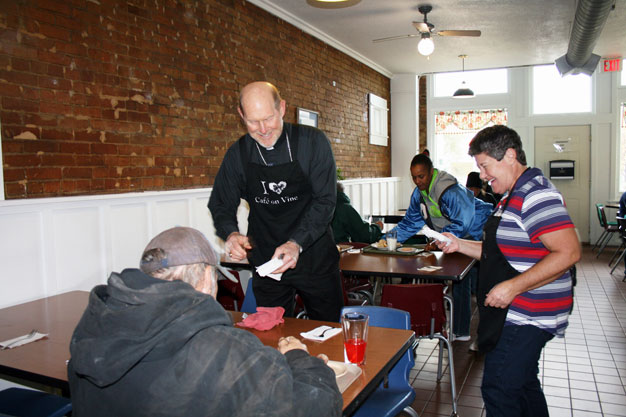
Church Leadership
- Church leadership at all levels received a great deal of attention during the listening sessions. As with many other topics, responses included a mix of positive and negative comments. Some insisted that the hierarchy in general is out of touch with people and does not listen. “Too many priests and bishops lack the humility, empathy and courage that is required for leadership.” Some find our leaders, including Pope Francis, bishops in the United States, Bishop Zinkula, and some pastors to be excellent role models, while others named specific areas for improvement.
- Pope Francis was lauded for his efforts to reduce clericalism and to open up channels of communication in the church. He was described as “more approachable than other Popes.” A few asserted that we need to build on his popularity in our efforts to build up the church’s reputation. On the other hand, a few found the pope to be too concerned with “political issues” such as climate change. Bishop Zinkula is described as “a kind and thoughtful leader,” with a good sense of humor.
Priests and Parish leadership
- When it comes to comments about priests, responses fall into at least two categories: concern about the shortage of priests and comments about the training and behavior of priests. A large number of people are under the impression that changing the rules about who can be ordained would at least help alleviate the shortage. Whatever the cause of the shortage, its effects on parishes is breaking many hearts. “We are losing parishioners due to the assignment of priests who come just to say Mass, but we never see or hear from them the rest of the week.” “We are at a breaking point where the shortage of priests is resulting in the closure of parishes and the death of the Catholic faith. The priests we do have are so busy they are unable to socialize with the laity or even learn their names.” Closure of parishes is seen as especially hard on rural communities where churches are distant from one another and where the parish has been a social center for generations.
- Some respondents’ hearts have been broken by negative encounters with certain priests. One person referred to “arrogant priests,” stating that especially younger priests are insulated from the people, and that many suffer from emotional health issues and are judgmental. Another person spoke of having left a parish they loved because a pastor insisted on having everything his own way. Some believe that poor seminary training leaves young priests isolated from the realities of life. Concerns were raised about seminary training, claiming that some seminaries hire conservative professors and train men who are unprepared or unwilling to promote Vatican II values. Another perceived problem is the long history of patriarchy in the church. Some lay people did not believe they could challenge a member of the clergy in any way.
Sex abuse scandal
- Naturally, the phrase “breaks your heart” brought many comments on the sex abuse scandal. A small group of respondents said that the church has responded well if too late and were glad to see the kinds of assistance offered to victims. A far larger group feels that not enough has been done. Hearts are broken by the damage done to the reputation of the church in general, especially given the kind of media coverage given to the scandal. Many say that their faith as such has not been affected by the scandal, but others are questioning or have left the church because of their own experiences or the experiences of family or friends. Some believe that the scandal is a major cause of the general drop in church membership and participation.
- The scandal has had further negative ramifications. The large number of priests who were not involved in the scandal suffer because of the damage to the reputation of the church and of clergy. Many commented that the laity are paying a high price for the scandal, not only financially, but in additional training and paperwork that is required of all church employees and volunteers.
Financial issues
- Church leaders also drew criticism with regard to financial policies. There was a great deal of criticism of what is regarded as “materialism”: spending too much on buildings, adornments, and extras rather than on helping the poor. Parishioners sometimes feel pressure to give more money even when they themselves are in need. Some also see a kind of favoritism in some parishes and in the larger church toward those who donate more money. On the opposite side, people rejoice when the church does reach out to those in need both within and beyond the parish. A common response was that we need more transparency from the church when it comes to money collected and how it is spent.
- Although the last capital campaign (2009-10) resolved the financial issues caused by bankruptcy, which resulted from clergy sexual abuse cases in the diocese, there is still a perception among some that the current campaign is to replace monies lost during the bankruptcy. Some comments referred to “lies, secrecy, cover-ups and lack of transparency.” The current capital campaign is for priests’ retirement, seminarians’ education, and parish projects. Comments about finances, which were applied to our own diocese and the larger church, highlight the importance of transparency in financial matters.
Women’s Leadership
- A large number of Synod participants feel broken-hearted about leadership roles in the church being closed to women and about the treatment of women in the church. They state that women are treated as second-class members of the church. They “are not treated as equals by our priests and deacons.” Additionally, women are not supported, but must navigate heavy moral burdens such as birth control, and balance work and family, by themselves. Women have many gifts to offer the church and the church is losing out because they are not given the chance to serve in leadership. A respondent mentioned attending prayer services led by women and experiencing excellent messages from which the whole church could benefit if women were allowed to preach at Mass.
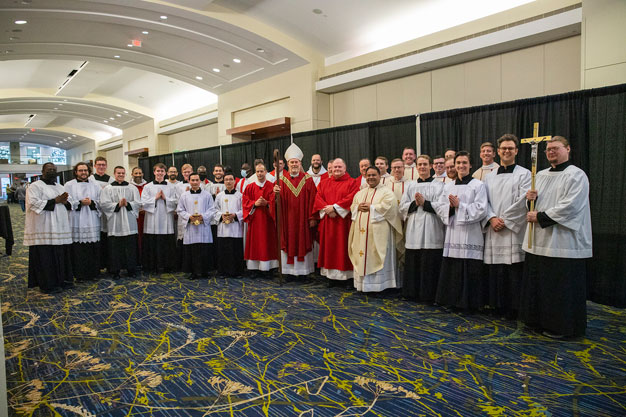
The Image of the Church
- The lack of women’s leadership and voice is viewed as a major factor harming the image of the church in society and thus our effectiveness in mission. Young people especially ask how women and people in general would be attracted to an institution that is so out of line with a society in which women are found in more and more prominent and powerful positions. Other factors that detract from the church’s attractiveness include the sex abuse scandal, polarization, and judgmentalism. Some describe the church as hypocritical because it claims to stand for justice while injustices persist within the church itself.
- Church teachings are cited sometimes in a positive and other times in a negative light. Some view the stability of church teaching as attractive; others speak of a failure to adapt as off-putting.
- What most enhances the image of the church, according to responses received, is the witness of the people of God. Other positives include the church’s stand for social justice, the persistence of the church throughout history and all over the world, and the sacraments.
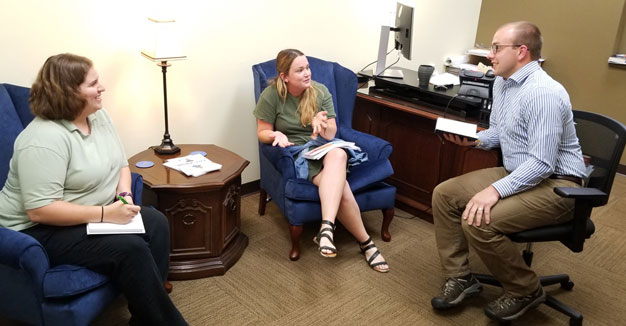
Our Mission of Evangelization
- The church exists not for itself but for mission. Synod participants in the diocese expressed diverse feelings about efforts at outreach or evangelization. Respondents expressed a deep desire to live out the faith by reaching out to others both within and beyond the parish. Well over half of comments received in the diocese related to this theme were from people who are happy with the outreach efforts of their parish and/or of the diocese. Respondents spoke to four areas of outreach: to all individuals within the church, to those with particular needs within and beyond the parish, to the larger local community, and to the global community.
- All individuals need to be invited to be involved in the activities of the parish. They also need opportunities for life-long faith formation as a necessary link between what we profess and what it means for our lives. Only when Catholics are engaged in a lifelong process of delving more deeply into our faith will the church be both a vital community and a sign that attracts others. In order to accomplish that goal, the church needs to make use of contemporary media and invest in the necessary staff and equipment to do so.
- Broken-heart comments in the area of evangelization and outreach touched on several issues. Some spoke of uneasiness with the call to evangelize. Some spoke of disappointment with the parish or diocesan response to a particular need. Some said that we do a poor job of letting even our own members know about the good things that are happening. Others expressed frustration with unchristian behavior and judgmental attitudes.
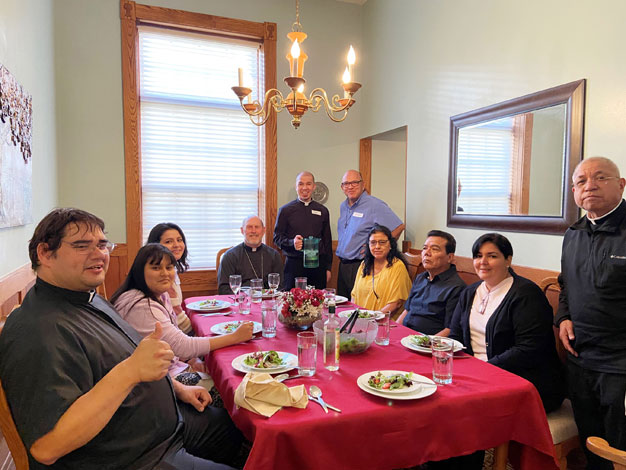
Conclusions
- At the end of their reflections on the Synod questions, one participant commented “Thank you for this opportunity to express my opinions and I hope they make some kind of impact other than just being something checked off the list.” The Diocese of Davenport is taking the Synod seriously and is committed to allowing the Synod process to have an impact. Some projects were already underway prior to the Synod but perhaps now are receiving additional impetus and direction based on the responses. Those efforts include the establishment of an office of evangelization; listening to members of the LGBTQ+ community and to other groups on the margins; planning for Eucharistic renewal through prayer, study, and action; searching for ways to provide education for those who teach religion in schools and in religious education; and participation in the Laudato Si’ Action Platform. New efforts may develop in light of needs identified or clarified through the experience of the Synod.
- Several comments indicated confusion about some teachings of the church or a fear that teachings were being incorrectly or inadequately presented. This, along with the number of comments that reflect a longing for more faith formation opportunities for people of all ages, support diocesan efforts to expand opportunities for informative and enriching lifelong faith development.
- The wording of comments about division or polarization within the church demonstrate the urgency members of the diocese feel around the sense that church unity may be threatened. The fact that in a number of areas, what broke some hearts filled others, along with the fact that some comments revealed deep feelings of anger or hurt, urge us to seek justice and means of healing. We need to continue to listen to one another, especially to those whose experiences and perspectives differ from ours. We also need to continue “reading the signs of the times,” as we are called to do by Vatican II, in order to discern how to live and bear witness to the Gospel in the 21st century.
- 48. As church, we are members of the One Body of Christ. We are called to be a sacrament of communion for the world. If our differences are allowed to become divisions, we will be ineffective in our mission. We pray that through our reflections and prayers, and through our responses to the information that the Synod sessions have provided, we will make progress in living out Jesus’ call to “Love one another as I have loved you.” May more hearts be filled by experiencing Christ’s abundant love, mercy, and understanding within our faith communities and the larger communities that we serve.











